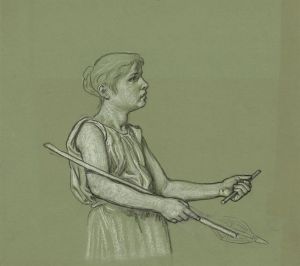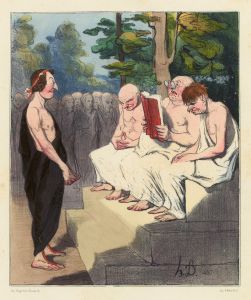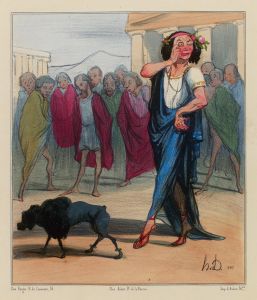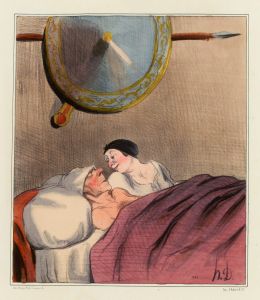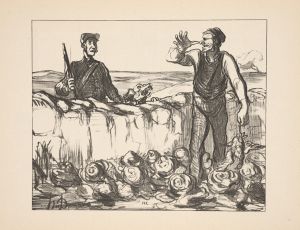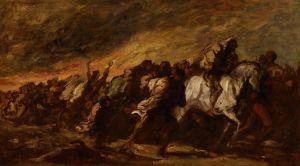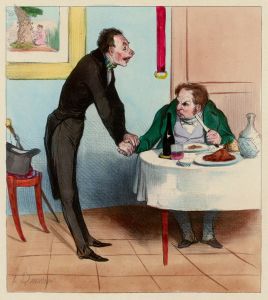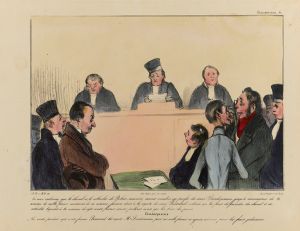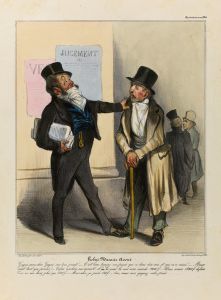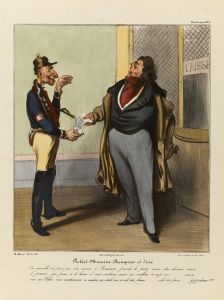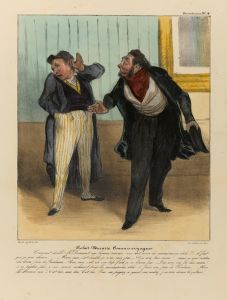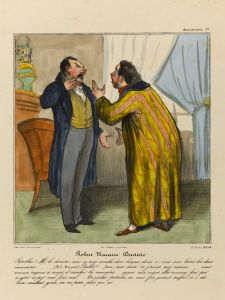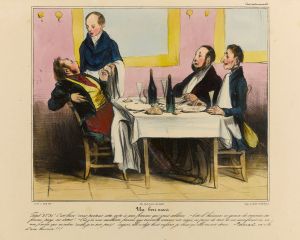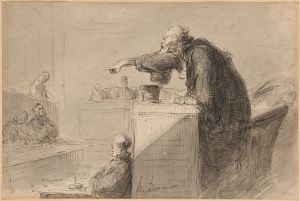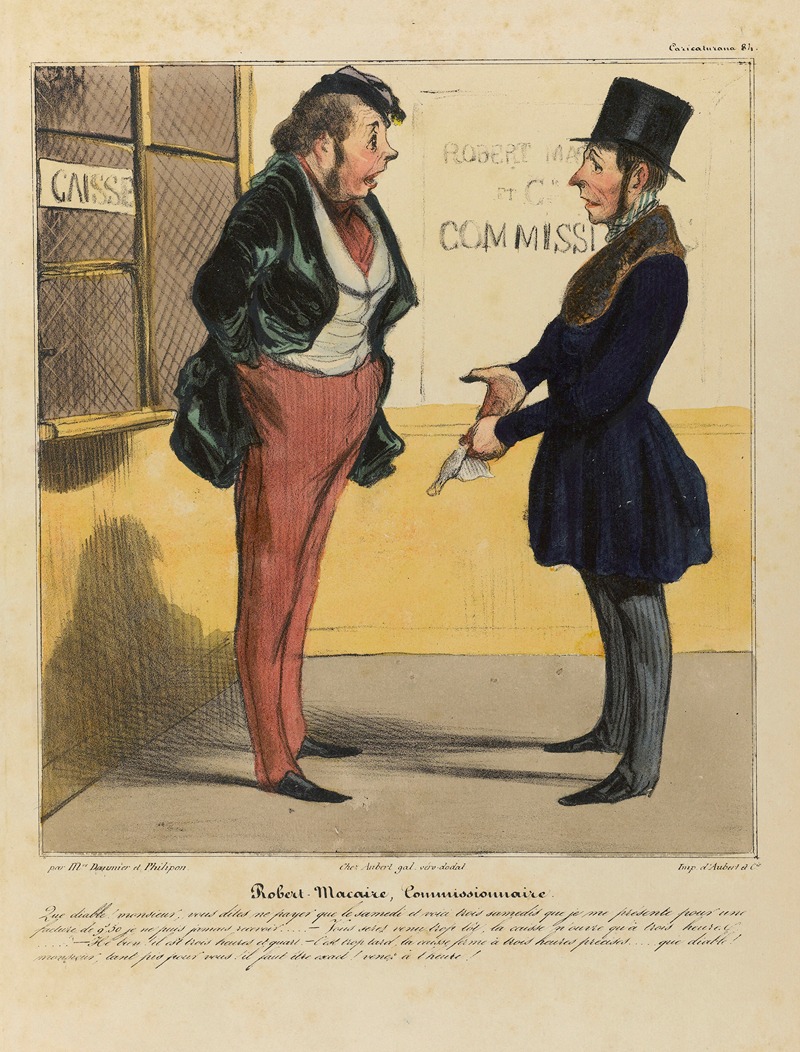
Robert Macaire, commissionnaire
A hand-painted replica of Honoré Daumier’s masterpiece Robert Macaire, commissionnaire, meticulously crafted by professional artists to capture the true essence of the original. Each piece is created with museum-quality canvas and rare mineral pigments, carefully painted by experienced artists with delicate brushstrokes and rich, layered colors to perfectly recreate the texture of the original artwork. Unlike machine-printed reproductions, this hand-painted version brings the painting to life, infused with the artist’s emotions and skill in every stroke. Whether for personal collection or home decoration, it instantly elevates the artistic atmosphere of any space.
"Robert Macaire, commissionnaire" is a lithograph created by the renowned French artist Honoré Daumier. Daumier, born in 1808 and active until his death in 1879, was a prolific artist known for his satirical works that often critiqued social and political life in 19th-century France. His oeuvre includes paintings, sculptures, and a vast number of lithographs, which were particularly influential in shaping public opinion during his time.
The character of Robert Macaire originated from a popular play titled "L'Auberge des Adrets," first performed in 1823. The play featured the character as a cunning and unscrupulous swindler, and he quickly became a symbol of social satire in France. The character was further popularized by the actor Frédérick Lemaître, who portrayed Macaire with a distinctive blend of humor and cynicism. This portrayal resonated with audiences and inspired various adaptations and artistic interpretations, including those by Daumier.
Daumier's lithograph "Robert Macaire, commissionnaire" is part of a larger series known as "Les Robert Macaires," which he produced between 1836 and 1838. This series was published in the satirical newspaper "Le Charivari," a platform that allowed Daumier to reach a wide audience. The series consists of 100 lithographs, each depicting Robert Macaire in different roles and professions, highlighting the absurdities and moral ambiguities of contemporary society.
In "Robert Macaire, commissionnaire," Daumier uses his characteristic style to depict Macaire as a commission agent, a profession that involved acting as an intermediary in business transactions. The lithograph captures the essence of Macaire's character—his opportunism and deceit—by illustrating him in a manner that suggests both charm and duplicity. Daumier's work often employed exaggerated facial expressions and body language to convey the moral and ethical shortcomings of his subjects, and this piece is no exception.
The lithograph reflects Daumier's keen observation of human nature and his ability to translate societal critiques into visual art. His work was not only a commentary on individual characters like Macaire but also a broader critique of the social and economic conditions of his time. Through the character of Robert Macaire, Daumier addressed issues such as corruption, greed, and the exploitation inherent in various professions.
Daumier's lithographs, including "Robert Macaire, commissionnaire," are celebrated for their technical skill and their incisive wit. His ability to capture the complexities of human behavior and societal dynamics has earned him a lasting place in the history of art. Today, Daumier is recognized as a master of satire, and his works continue to be studied for their artistic merit and their insightful commentary on 19th-century French society.
"Robert Macaire, commissionnaire" remains an important example of Daumier's contribution to the art of lithography and his role as a social commentator. The lithograph, like many of Daumier's works, is housed in various collections and continues to be exhibited in museums around the world, where it is appreciated for both its artistic qualities and its historical significance.





